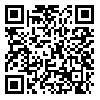Volume 6, Issue 1 (6-2019)
vacres 2019, 6(1): 43-49 |
Back to browse issues page
Department of Hepatitis and AIDS, Pasteur Institute of Iran, Tehran, Iran
Abstract: (4882 Views)
Introduction: To date, while many studies have investigated antiviral agents or vaccines against HIV, success has been limited. In this field, mutagenesis of the viral genome often contributes to viral escape from the antiretroviral therapies and the emergence of HIV-1 strains resistant to the drugs. Therefore, developing alternative methods, including more effective vaccines, antiviral therapies (such as RNAi therapy) and delivery systems, seems to be necessary to compensate for these issues. The aim of this study was to establish an efficient system for siRNA delivery as a safe anti-HIV therapeutic approach. Methods: In this research, the use of chitosan-coated SPION was investigated as a method for RNA delivery. So, after generating a stable cell line of HEK293 (expressing HIV-1 tat), we designed a potent siRNA against HIV-1 tat, and then the effectiveness of the modified SPION in siRNA delivery to HEK293 cells was evaluated. Results: The results of this study showed that the optimal concentration (50 µg/mL) of the modified SPION containing anti-tat siRNA (with a range size of 50-70 nm and average zeta potential of +25 mV) were significantly internalized into the cells and decreased the expression of HIV-1 tat over than 80%. Moreover, the nanoparticles showed no considerable toxicity on the cells. Conclusion: It would be concluded that SPION could be optimized as a probable RNA/vaccine delivery system into target cells. Therefore, this study offers a therapeutic strategy against HIV or other infectious diseases.
| Rights and permissions | |
 |
This work is licensed under a Creative Commons Attribution-NonCommercial 4.0 International License. |




